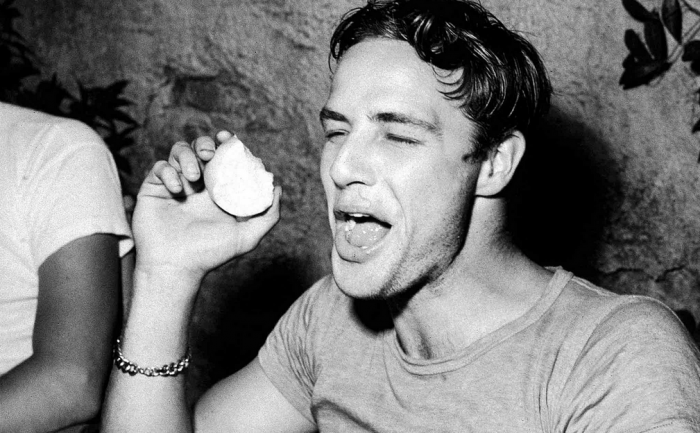Despite being a great actor Marlon Brando was a human being who struggled with his past and career. Listen to me, Marlon brings viewers into Brando’s mind and captures his tormented search for meaning and internal peace.
Brando is often cited as the most influential actor of all time. He lived from 1924 to 2004 and had a remarkable career, acting in iconic films such as A Streetcar Named Desire (1947), On the Waterfront (1954), and Last Tango in Paris (1972). Apart from achieving legendary status in Hollywood, Brando had turbulent family and romantic relationships. Stevan Riley, the director, used audio recordings of Brando reflecting on his life to create a unique portrait of the actor, giving the documentary a more intimate feel. These tapes, which were previously undiscovered, provide a great amount of unrevealed information to his fans. Although the movie could easily slip into presenting Brando as a hero since he is the narrator, it instead makes the audience understand where he comes from and what could have prompted his often standoffish behavior. Some audio comments from directors he worked with, such as Bernando Bertolucci from Last Tango in Paris, also provide interesting external points of view that contrast with Brando’s own perspective on his work.
Moving chronologically through his life, the movie is mostly supported by pictures of Brando as a child, and interview clips of Stella Adler, an acting teacher for whom he had great esteem. Then, the personal questions and struggles that he reflects on are accompanied by pictures and interview footage—more importantly by clips from his movies, each cleverly selected so that its subject matter matches the theme that Brando is discussing. It becomes clear that acting was a positive force for Brando, stemming from a life-long interest in analyzing people’s behavior, searching for what they are hiding, and imitating them.
As Brando gets older, more clips of the ‘real’ him are included. In fact, the movie begins with clips, which re-appear regularly throughout the movie, of TV news covering a shooting at Brando’s house in 1990 involving his children. Since there are more clips available for this part of Brando’s life than for his childhood, one wonders if this part of his life was unnecessarily focused on because of the greater availability of footage. Thus, while an interesting and visually arresting piece of work, it is somewhat of an uneasy watch as it tries provides a tentative explanation for Marlon’s deep concern with keeping his life private.
Since Brando was very protective of his private life, the audience comes to realize during the film that he probably would have hated his feelings being exposed. These recordings were most likely created for his own benefit only, as the labels “self-hypnosis” on the tapes indicate. While they very informative and offer a new insight on Brando’s career, it is questionable whether or not his wishes have been disrespected. Yet, Brando’s desire to be treated like everyone else might be fulfilled since he is portrayed as a person, not a famous star incessantly followed and raved about.









